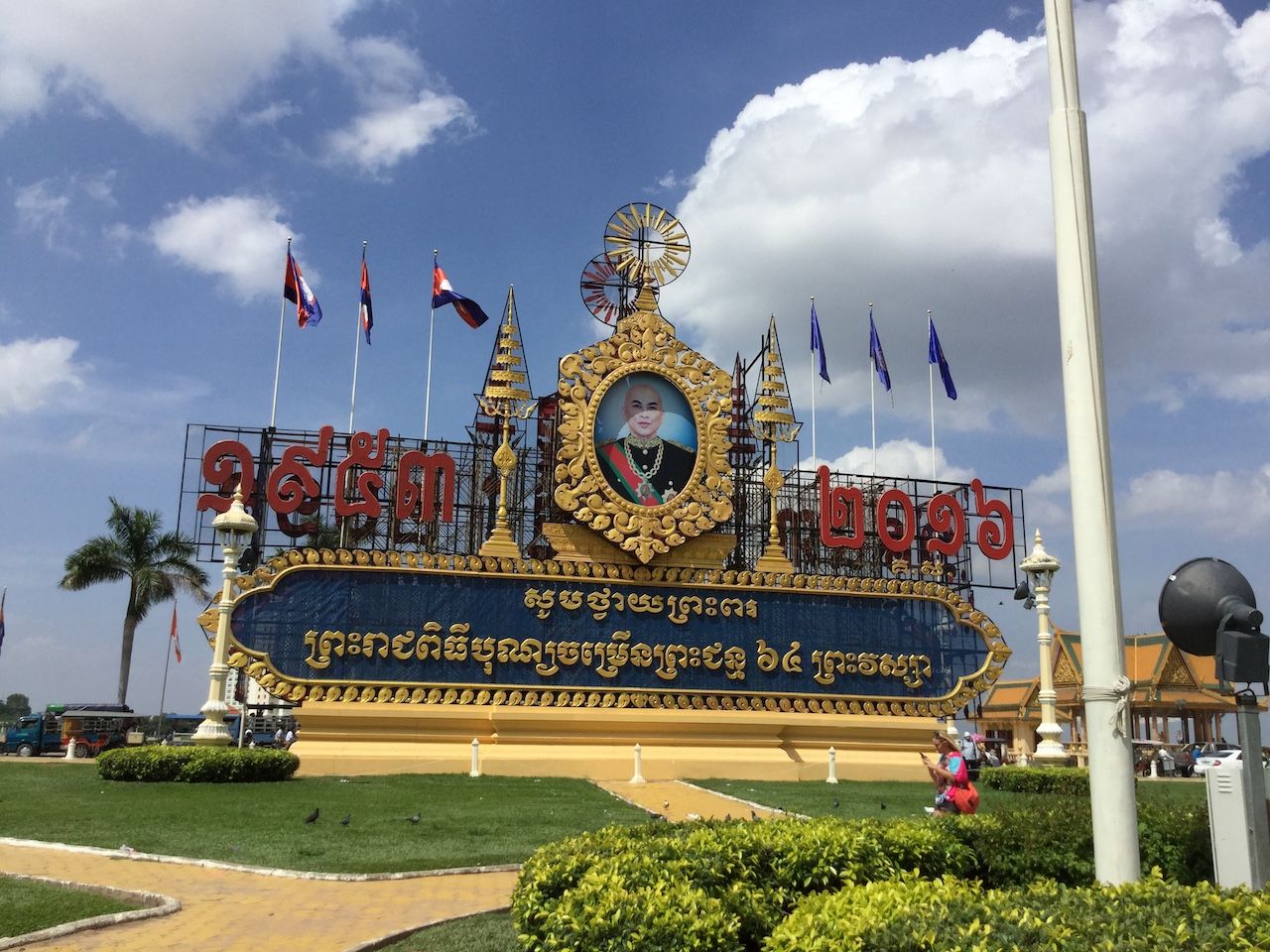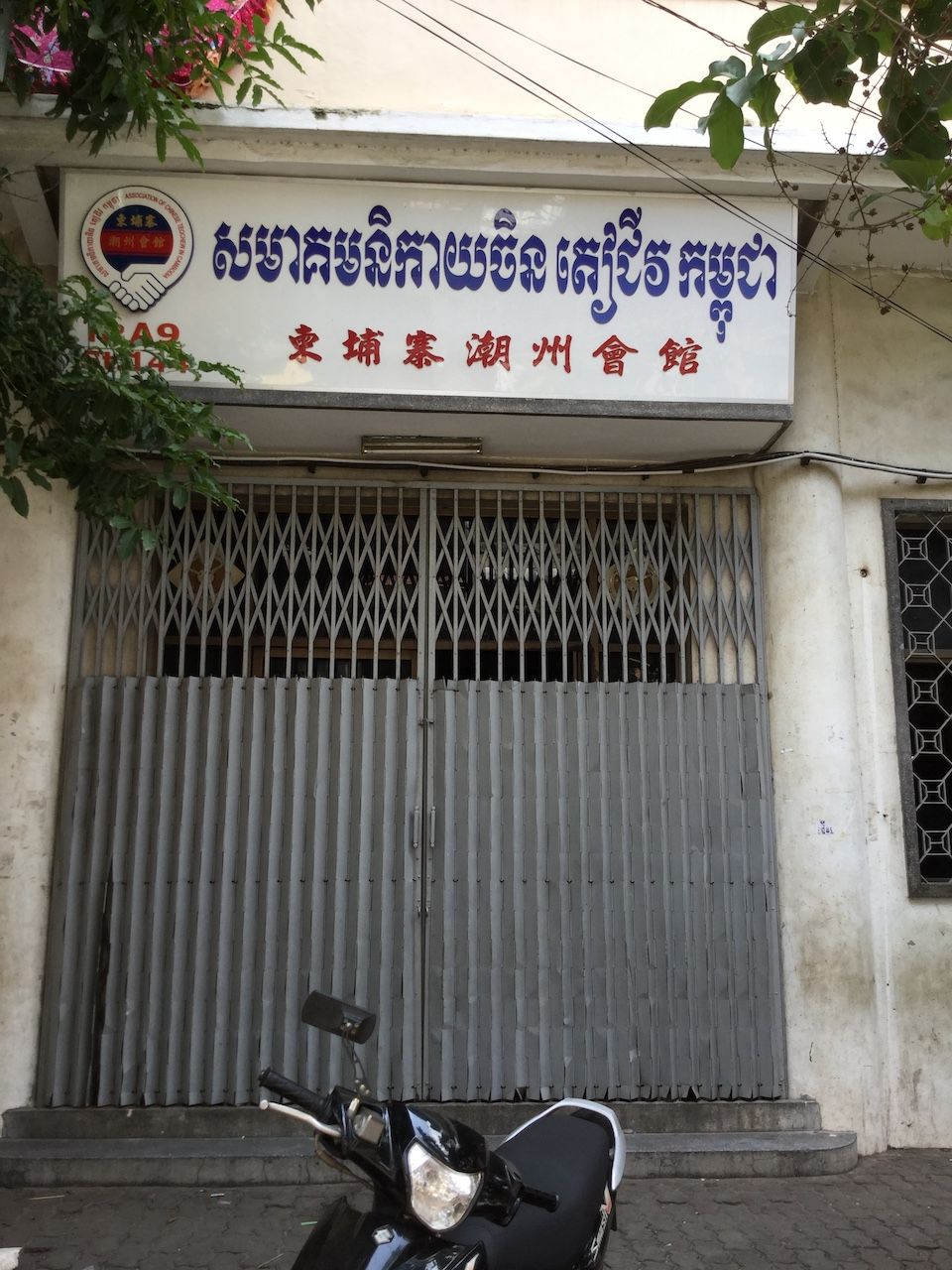Rooting and Returning: The Life Story of the Cambodian Overseas Chinese in Macau
Author: Xie Xiaoyang (Senior Lecturer, Department of Communication, University of Macau)
In the history of overseas Chinese in Southeast Asia in Macau, Chinese from Cambodia cannot be absent. In addition to personal reasons, in the early 1970s, these Chinese who mainly arrived from Phnom Penh had already emerged in large and small industries in a short period of time. They operate real estate, supermarkets, building materials, and also open snack shops, bringing authentic food such as Phnom Penh Kuey Teow to the small town until today.
From the mid-1960s to the mid-1970s, political turmoil in many Southeast Asian countries led to Chinese refugees in Macau. According to Qin Xixing's research, there were at least 20,000 overseas Chinese who immigrated to Macau at that time, including Myanmar, Cambodia and Indonesia.
In 2015, I set foot in Phnom Penh, the capital of Cambodia, for the second time. When the plane landed at Bochengdong International Airport in the western suburb of Phnom Penh, tourists came and went, and modern buildings came into view. This situation is like an eternity. It's been 15 years since I came to this city for the first time. The airport is as simple as a ferry terminal, and I still worry about my relatives and friends. Full of "killing battlefield" feel.

In the last century, Cambodia experienced great difficulties. First experienced the coup d'état of the pro-American regime of Long Nuo, and then ravaged by the Red Khmer. This fertile plain, described as "easy to find rice and grain", has suddenly become a purgatory on earth. At that time, Cambodia had a population of about 8 million people. In less than a decade of suffering, at least 2 million people died unofficially, and a large number of people fled, including the Chinese who had settled down for generations.
In the end, what kind of life stories did these Cambodian Chinese who fled in the mid-20th century have before they came to Macau? Which part of these stories has already disappeared? Which part has taken root here?
According to the current textual research, the earliest record of Chinese life in Cambodia is "Zhen La Feng Tu Ji". More than 700 years ago, the Chinese had settled in today's Cambodian land. In 1295, during the reign of Emperor Chengzong of the Yuan Dynasty, he dispatched a mission to the sea from Wenzhou and landed in the then Angkor Kingdom. Zhou Daguan, a native of Wenzhou, was instructed to accompany him, and after returning to China two years later, he wrote "The Story of Zhenla Customs" in the form of travel notes. The book has become a treasure for later generations to study the traces of Chinese in Southeast Asia.
According to Zhou Daguan's experience, we can see the purpose and life characteristics of the Chinese at that time. First of all, the book often uses "Tang people" to describe people who traveled from China at that time. This is probably related to the prosperity of the Tang Dynasty and overseas. The Chinese went to the local area mainly for trade, and thus married with the local people.
A passage in the book mentions that "people in the country can do business better than women", and "one must accept a woman first" in order to facilitate business with the local people. As for the chores of life, it is even more interesting. Another paragraph mentions that the locals "laugh when they see people from the Tang Dynasty who put on toilet paper to wipe them." In order to show that the "Tang people" and the local people are also very different in the matter of dung.

In modern times, with the continuous war in China, the number of Chinese migrating to Cambodia has also increased significantly, and their influence has increased. William Willmott, who studies Chinese human rights in Cambodia, pointed out in "The Chinese in Cambodia" (The Chinese in Cambodia) that at the end of the 19th century, there were about 130,000 Chinese living in Cambodia, which was close to the total population of Cambodia at that time. 10% of .
After World War II, in order to escape the civil war, the population moved to Cambodia soared to 420,000. Although these Chinese, who account for more than 10% of Cambodia's total population, cannot get involved in the political arena, Chen Shilun pointed out that they are an important party in Cambodia to maintain the dual stable structure of "Cambodian politics-Chinese economy".
From the end of the 19th century to the 1960s, Cambodia experienced two stages of French colonization and the establishment of the Kingdom of Cambodia. The situation of the Chinese was also different due to different governance models.
in doing business. Wilmot pointed out that during the French colonial period, the Chinese had a relatively large degree of freedom and even power. In addition to being free to do business, it also has the right to approve Chinese entering and leaving the Cambodian border. However, after World War II, the Norodom royal family regained power through the constitutional monarchy, and passed a number of laws to protect the rights of their own people, including listing 18 industries that the Chinese cannot engage in, such as arms, salt, rice, jewelry, etc., as well as business Logging, immigration clearance, and what is particularly interesting is that Chinese cannot open hair salons.
The reason remains to be investigated. But in general, because the Norodom royal family is friendly with Beijing, its policy towards Chinese is still moderate, and there is no Chinese exclusion like Indonesia and Myanmar.

In fact, for hundreds of years, these Chinese doing business have mainly lived in Phnom Penh, the capital of today. According to the article by Portuguese adventurer BPGroslier in "Angkor et le Cambodge au XVIe siècle d'apres les sources portugaises et espagnoles, 1958" (Angkor et le Cambodge au XVIe siècle d'apres les sources portugaises et espagnoles, 1958), as early as 1609, Chinese The population in Phnom Penh has exceeded 10% of the total population in Cambodia.
By 1963, nearly a third of all Chinese lived in Phnom Penh, accounting for more than 30 percent of the capital's overall population. This feature proves that the Chinese play a pivotal role in Cambodia's economy.
In addition, these Chinese people mostly use their fellow villagers as a place to gather strength and exchange their needs. For many years, the Chinese who immigrated to Cambodia are mainly Chaozhou, Guangzhou, Fujian, Hainan and Hakka, if they are distinguished by language and background. Before the French colonization, they had their own gangs.
By 1906, the French colonial government issued the "District Residence Order", which stipulated that the five gangs live in districts for tax collection and public security management. This method of separating different groups to facilitate management has indirectly deepened the centripetal force of the fellow villagers.
After World War II, the Kingdom of Cambodia was rebuilt. Although the five gangs were no longer restricted to where they lived, these community relationships composed of different languages had long gone beyond the place of residence and extended to business cooperation, marriage, education and study.

For example, in Phnom Penh, there are Duanhua School run by Chaoshan Association, Minsheng School run by Fujian Association, Guangzhao School run by Guangzhao Association, Chongzheng School run by Hakka Association, and Integrated School run by Hainan Association. According to Wilmot's analysis, the life composition extended by language forms an important cultural identity for the local Chinese.
Some of the life stories of Cambodian Chinese before moving to Macau have survived, like food, while others have appeared in different forms, and the form of hometown organizations has disappeared. According to "Returned Overseas Chinese in Macau", from 1969 to 1975, a total of 5,616 Cambodian overseas Chinese took refuge in Macau. After they arrived, the initial gathering place was mainly the Returned Overseas Chinese Association established in 1968.
In 1975, they established the Cambodian Chinese Welfare Group under the Federation of Returned Overseas Chinese. The first group leader was Xie Xiang, and there were 29 deputy group leaders and executive committee members. In 1983, the Cambodian-Chinese Welfare Group purchased a residential building on the first floor of Feineng Biandu Street as the group site, and rented out a part of the units as group expenses. Later, the Cambodian Chinese Welfare Group was expanded to the "Cambodia Overseas Chinese Association", but it still belongs to the ward of the Returned Overseas Chinese Association.

This difference in the way of aggregation reflects that after the overseas Chinese took refuge in Macau, their dual identities of taking root overseas and returning to the Chinese community are stronger than the cultural identity originally constructed by the place of origin and language. The use of "returned overseas Chinese" instead of overseas Chinese by the "Returned Overseas Chinese Association" is a clear example.
Therefore, although the five language groups were clearly separated in Cambodia, in Macau, the backbone of the association came from different regions overseas, and they mainly communicated in Mandarin and Cantonese. In addition, these cadres are less involved in the activities of their fellow villagers. Take Liang Xueyu, the first president and native of Fujian, as an example. He has been engaged in education in Indonesia for many years. After founding the Association of Returned Overseas Chinese, he spent the rest of his life traveling around Southeast Asia, contributing to the education of overseas Chinese.
#Number of articles: 1️⃣1️⃣2️⃣
references
Qin goes west. "Macao Returned Overseas Chinese Population and Social Impact", published in the "Macao Returned Overseas Chinese Association's 20th Anniversary Commemorative Issue". 1988.
Lin Qingfeng and Xu Junquan wrote. "Returned Overseas Chinese in Macau". Chinese International Press & Publishing Group. 2005.
William Willmott. The Chinese in Cambodia . University of British Columbia. 1967.
Bernard Philippe Groslier. Angkor et le Cambodge au XVIe Siècle d'apres les sources portugaises et espagnoles . Presses de Universitaires de France. 1958.
💬 Stories of [Telling Stories on the Frontier of the Empire] |📁Article List |👍Facebook Page |📣 Call for Papers

Like my work? Don't forget to support and clap, let me know that you are with me on the road of creation. Keep this enthusiasm together!









